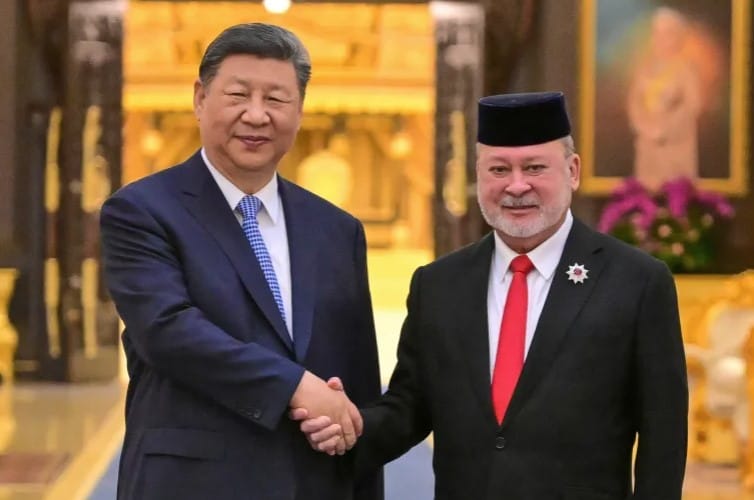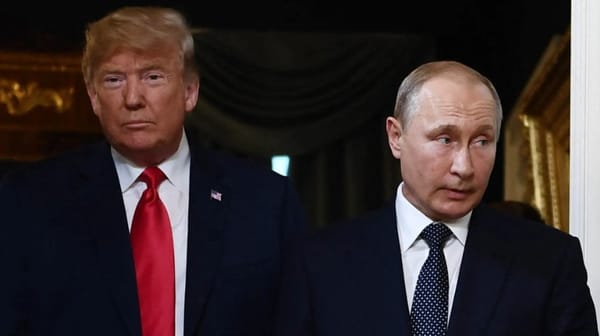Xi Jinping’s Southeast Asia Tour: Deepening China’s Regional Influence Amid U.S. Trade War

Introduction
Chinese President Xi Jinping’s ongoing diplomatic tour of Southeast Asia—most recently marked by his high-profile visit to Malaysia—signals a pivotal moment in China’s regional strategy. As the United States escalates tariffs and pushes for economic “decoupling,” Beijing is intensifying outreach to ASEAN countries and Vietnam, aiming to reinforce economic, political, and strategic ties. Xi’s visit, which also includes stops in Vietnam and Cambodia, is widely seen as a direct response to U.S. trade measures and a calculated effort to position China as a stable, reliable partner in an era of global uncertainty[1][2][3][4].
The Context: U.S.-China Trade War and Regional Realignment
The backdrop to Xi’s tour is an unprecedented trade conflict between China and the U.S. President Trump’s administration has imposed sweeping tariffs on Chinese goods, disrupting global supply chains and creating economic headwinds for export-driven Asian economies. In response, China is seeking to shore up its regional alliances, diversify trade routes, and present itself as a champion of multilateralism and open markets[1:1][3:1][5].
Southeast Asian nations, particularly Malaysia and Vietnam, have been hit hard by U.S. tariffs—at rates as high as 46–49% before a temporary suspension. These countries are now at the center of a strategic contest, as both Washington and Beijing vie for influence over the future of regional trade and integration[5:1][4:1].
Xi’s Malaysia Visit: A “New Golden Era” for Bilateral Ties
Symbolism and Substance
Xi’s visit to Malaysia was marked by ceremony and symbolism. Greeted by King Sultan Ibrahim at the golden-domed Istana palace and later meeting Prime Minister Anwar Ibrahim, Xi proclaimed the dawn of a “new golden era” for China-Malaysia relations, coinciding with the 50th anniversary of diplomatic ties[1:2][2:1][6][4:2]. The leaders announced a series of new collaborations across sectors, including artificial intelligence, digital economy, and green technology[2:2][4:3].
Economic Cooperation and Belt & Road
Malaysia, a vital node along the ancient Maritime Silk Road and an early Belt and Road Initiative (BRI) partner, has seen its economic ties with China flourish. In 2024, bilateral trade reached $212 billion—nearly 1,000 times the level at the start of diplomatic relations. China has been Malaysia’s largest trading partner for 16 consecutive years[2:3].
Key projects include:
- East Coast Rail Link: A 665-kilometer railway connecting Malaysia’s less-developed east coast with its economic centers in the west, enhancing national connectivity and regional integration[2:4].
- “Two Countries, Twin Parks”: Industrial zones in Qinzhou (China) and Kuantan (Malaysia) serve as models for cross-border collaboration and port development[2:5].
The leaders also signed agreements to deepen cooperation in emerging industries, from AI to digital finance and tourism[4:4].
Strategic Messaging
Xi’s messaging in Malaysia was clear: China seeks to build a “high-level strategic China-Malaysia community with a shared future,” resisting “geopolitical and camp-based confrontation” and “unilateralism and protectionism”[2:6]. Xi’s signed article in Malaysian media called for joint efforts to combat the “undercurrents” of global fragmentation and to promote regional peace, security, and win-win cooperation[2:7].
China-ASEAN Relations: Resilience and Integration
ASEAN as a Strategic Priority
China has consistently prioritized ASEAN in its neighborhood diplomacy, viewing the bloc as central to its vision of a “community with a shared future.” China-ASEAN trade reached $982 billion in 2024, with both sides remaining each other’s largest trading partner for the fifth consecutive year[7]. The Regional Comprehensive Economic Partnership (RCEP), the world’s largest free trade agreement, has further institutionalized economic and regulatory coordination across the region[8][7:1].
Supply Chains and Digital Economy
The RCEP and China-ASEAN Free Trade Area 3.0 have promoted a more integrated and resilient supply chain network. Trade in intermediate goods between China and ASEAN now accounts for 67% of total trade volume, underscoring the region’s growing interdependence[7:2]. China has also supported ASEAN’s Digital Masterplan 2025 and the ASEAN Digital Community 2045, signing memoranda on investment in the digital and green economy[8:1].
Flagship Projects and Investment
- Jakarta-Bandung High-Speed Railway: A BRI flagship, this project exemplifies China’s role in regional infrastructure development[8:2].
- Electric Vehicle Sector: ASEAN has become a key overseas investment destination for Chinese EV enterprises, reflecting the region’s role in China’s green transition[8:3].
Vietnam and Cambodia: Deepening Ties, Navigating Risks
Vietnam: Cooperation Amid Competition
Xi’s stop in Vietnam is especially significant. Trade between China and Vietnam nearly doubled from 2017 to 2024, making Vietnam China’s biggest trade partner in Southeast Asia[5:2]. The two sides are expected to sign around 40 agreements, including a major railway project linking northern Vietnam to China, agricultural trade, and digital economy initiatives[3:2][5:3].
However, Vietnam’s leaders must balance their deepening ties with China against the risk of antagonizing the U.S., which remains a crucial export market. Vietnamese officials are wary of being seen as too close to Beijing, particularly as they negotiate for relief from U.S. tariffs[3:3][5:4].
Cambodia: A Reliable Ally
Cambodia, another stop on Xi’s tour, has become one of China’s closest partners in ASEAN. Beijing’s investments in infrastructure, agriculture, and manufacturing have transformed the Cambodian economy, and Prime Minister Hun Manet has welcomed Xi’s visit as a sign of enduring friendship and opportunity for further cooperation[3:4][4:5].
Regional Dynamics: Balancing Great Power Rivalry
ASEAN’s Delicate Balancing Act
While ASEAN countries have welcomed Xi with open arms, many remain cautious. The region is acutely aware of the risks of being caught in the crossfire of U.S.-China rivalry. Some countries are concerned about a flood of cheap Chinese goods redirected from U.S. markets due to tariffs, potentially undermining local industries[5:5].
As Malaysia’s ASEAN chairmanship this year underscores, the bloc is seeking to maintain unity and strategic autonomy, leveraging both U.S. and Chinese engagement while avoiding overt alignment with either superpower[4:6].
China’s Messaging: Multilateralism vs. Hegemony
Xi has positioned China as a champion of multilateral trade, regional integration, and stability, contrasting this with what he describes as the “erratic” and “protectionist” policies of the Trump administration[3:5][5:6][4:7]. By emphasizing openness, reliability, and shared prosperity, Beijing hopes to reassure Southeast Asian partners and counter U.S. narratives about Chinese “hegemony”[4:8].
Implications for the Region and Beyond
Economic Integration and Supply Chain Resilience
Xi’s tour is likely to accelerate regional economic integration, with China and ASEAN deepening their links in trade, infrastructure, and technology. The RCEP, BRI, and digital economy partnerships are creating a more resilient and interconnected production network, positioning Southeast Asia as a key node in the global economy[8:4][7:3].
Strategic Competition and Regional Security
The intensifying U.S.-China rivalry is compelling ASEAN countries to invest in diplomatic agility. While China’s economic weight is undeniable, the U.S. remains a vital security partner for many in the region. The outcome of this balancing act will shape the future architecture of the Indo-Pacific.
Future Prospects
As Xi urges Southeast Asia to resist “unilateral bullying” and embrace multilateralism, the region’s leaders are likely to continue hedging—welcoming Chinese investment and trade, while quietly seeking to preserve their strategic options with the U.S. and other partners[5:7].
Conclusion
President Xi Jinping’s Southeast Asia tour, highlighted by his state visit to Malaysia, is a clear demonstration of China’s intent to reinforce its leadership in the region amid escalating U.S. economic pressure. By deepening economic, technological, and political ties with ASEAN countries, Beijing is positioning itself as an indispensable partner and a bulwark against global fragmentation. For Southeast Asian nations, the challenge remains how to maximize the benefits of Chinese engagement while preserving autonomy and stability in an increasingly contested geopolitical landscape[1:3][2:8][3:6][5:8][4:9].
https://www.aljazeera.com/news/2025/4/16/chinas-xi-hails-new-golden-era-with-malaysia-during-trade-tour ↩︎ ↩︎ ↩︎ ↩︎
https://english.news.cn/20250417/1ec6c8d7a17c4d8983f18980069bffab/c.html ↩︎ ↩︎ ↩︎ ↩︎ ↩︎ ↩︎ ↩︎ ↩︎ ↩︎
https://www.nytimes.com/2025/04/13/world/asia/china-xi-us-trade-war-southeast-asia.html ↩︎ ↩︎ ↩︎ ↩︎ ↩︎ ↩︎ ↩︎
https://www.channelnewsasia.com/east-asia/china-president-xi-jinping-malaysia-state-visit-5069601 ↩︎ ↩︎ ↩︎ ↩︎ ↩︎ ↩︎ ↩︎ ↩︎ ↩︎ ↩︎
https://edition.cnn.com/2025/04/14/asia/china-xi-southeast-asia-visit-trump-tariffs-intl-hnk/index.html ↩︎ ↩︎ ↩︎ ↩︎ ↩︎ ↩︎ ↩︎ ↩︎ ↩︎
https://www.chinadailyasia.com/article/609500 ↩︎ ↩︎ ↩︎ ↩︎ ↩︎




